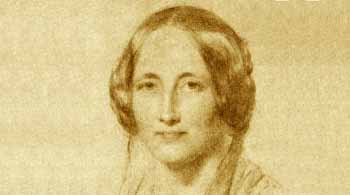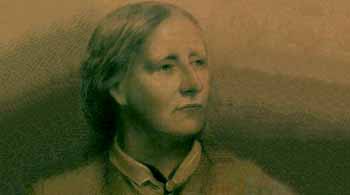|
- The Author
- Elizabeth Cleghorn Gaskell, novelist and social critic, "had always felt a deep sympathy with the care-worn men" *) of the working classes. She was born in London in 1810 and was the daughter of a Unitarian clergyman who was a civil servant and journalist. After her mother's early death she was brought up by her aunt in Knutsford, a village that served as the prototype not only for "Cranford" but also for "Hollingford" in "Wives and Daughters". In 1832 she married the Reverend William Gaskell, a Unitarian clergyman in Manchester and both worked among the Manchester poor. She bore six children, of whom four daughters survived. With the publication of the "industrial novel", Mary Barton, in 1848, her reputation was at once established and Carlyle and Dickens encouraged her to continue to write. In 1850 she met Charlotte Brontë and the two women immediately made friends. She died at Alton in Hampshire in 1865.




- The Work
-
My Diary (1835-38)
Sketches Among the Poor (poem, 1837)
Clopton Hall (prose sketch, 1840)
Life in Manchester (short stories, 1847/48):
Libbie Marsh's Three Eras
The Sexton's Hero
Christmas Storms and Sunshine
Mary Barton (novel, 1848)
First outline plan for the novel
The Moorland Cottage (nouvelle, 1850)
Cranford (novel, 1851/53)
Ruth (novel, 1853)
Lizzie Leigh and Other Tales (short stories, 1855)
North and South (novel, 1854/55)
The Life of Charlotte Brontë (biography, 1857)
My Lady Ludlow (novel, 1859)
Round the Sofa (short stories, 1859)
Right at Last and Other Tales (short stories, 1860)
Lois the Witch and Other Tales (short stories, 1861)
Sylvia's Lovers (novel, 1863)
A Dark Night's Work (nouvelle, 1863)
Cousin Phillis and Other Tales (short stories, 1865)
The Grey Women and Other Tales (short stories, 1865)
Wives and Daughters (novel, 1864/1866)
Letters
- Appendix
- Carlyle's letter on "Mary Burton" (1848)
Mitsuharu Matsuoka's Gaskell site
Sources/Colophon
|